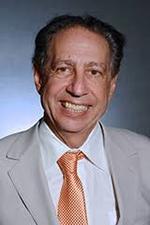
Professionals and managers are becoming more liberal while blue collar workers, who were once the backbone of leftist politics in the U.S., now show more conservative views on a number of issues that liberal politicians have elevated in recent elections, reports a study led by UC Riverside professor of sociology and public policy Steven Brint.
“On such issues as redistributing wealth, reducing poverty or economic inequality, tackling crime and policing, and limiting corporations’ social and economic influence, professionals and managers have become more liberal while blue-collar workers have become more conservative,” said Brint.
Brint and co-authors Michaela Curran at the University of Iowa and Matthew C. Mahutga at UC Riverside ran several statistical analyses on data from the General Social Survey over a 44-year period between 1974 and 2018 to see how attitudes on 15 topics varied over time between different occupational groups. The issues they investigated ranged from morality and civil liberties to crime control and economic redistribution. They also include whether people identify with a political party or a particular ideological view.
They found that professionals and managers were trending in a left or liberal direction on 10 of the 15 issues. By comparison, blue-collar workers were trending left or liberal on only five and conservative on 10. In cases in which members of both groups were trending liberal, professionals and managers were, with few exceptions, trending liberal more quickly. Moreover, professionals and managers are now as or more liberal than blue-collar workers on 13 of the 15 issues.
The authors link these shifts to changes in the economy that favor occupations requiring a highly educated workforce, such as in the technology field, as well as economic changes that have created more insecurity among workers, including the decline of unions and the dominance of low-wage countries in manufacturing due to globalization. Blue collar work has become increasingly precarious, encouraging greater dependence on business and, perhaps surprisingly, less openness to social spending to ameliorate poverty.
On several cultural and demographic characteristics associated with greater liberalism, the authors also found growing gaps between the two groups. The widening gaps were particularly notable on non-authoritarian values and advanced degrees. Professionals and managers also continued to affiliate with non-fundamentalist religion more often than blue-collar workers. In the study, each of these factors was associated with left and liberal trends.
The most frequent and often the largest effects the authors found related to authoritarianism, or the tendency to submit to leaders. Social scientists usually measure this by asking about child-rearing values and if individuals responded that it was important for children to always obey their parents, the authors categorized it as an authoritarian view.
“We found that when someone ranked high on authoritarianism they tended toward conservatism on many of the attitude questions,” said Brint. “When they ranked low on authoritarianism, finding qualities other than obedience more important, they trended toward liberalism. And the gaps on authoritarianism are growing.”
Having a graduate degree and non-fundamentalist religion were also associated with greater liberalism. In the case of advanced degrees, the gaps between groups grew much larger over time and in the case of non-fundamentalist religion the already sizable gaps persisted.
However, some growing gaps between the two groups did not incline professionals and managers toward left or liberal views.
“The growing gaps by income are also a function of macro-economic change, but they are associated with greater conservatism among professionals and managers, not greater liberalism, especially on issues related to inequality, poverty amelioration and criminal justice,” Brint said. “But the effects of higher incomes are not enough to override the joint effects of non-authoritarian values, higher levels of education, and non-fundamentalist religious affiliations, all of which are pushing professionals and managers to the left.”
Race played a surprisingly small role, suggesting that the racial divide may not be as formidable as many people imagine.
“When there’s no race-baiting to divide voters during campaign seasons, whites and minorities actually agree on many issues,” said Brint. Whites and racial minorities differed on just two of the 15 topics. Minorities were less likely than whites to support organized labor and more likely to identify as Democrats. These distinctions held for professionals and blue-collar workers alike.
Professionals and managers and blue-collar workers still tend to agree on some issues. These include support for more government spending on education, health, and the environment, and support for gun control.
“Politicians who are interested in cross-class alliances should really focus on issues like these,” Brint said.
The open-access paper, “Are U.S. professionals and managers more left than blue-collar workers? An analysis of the general social survey, 1974 to 2018,” is published in Socius: Sociological Research for a Dynamic World and available here.
Header photo: Bermix Studio on Unsplash




